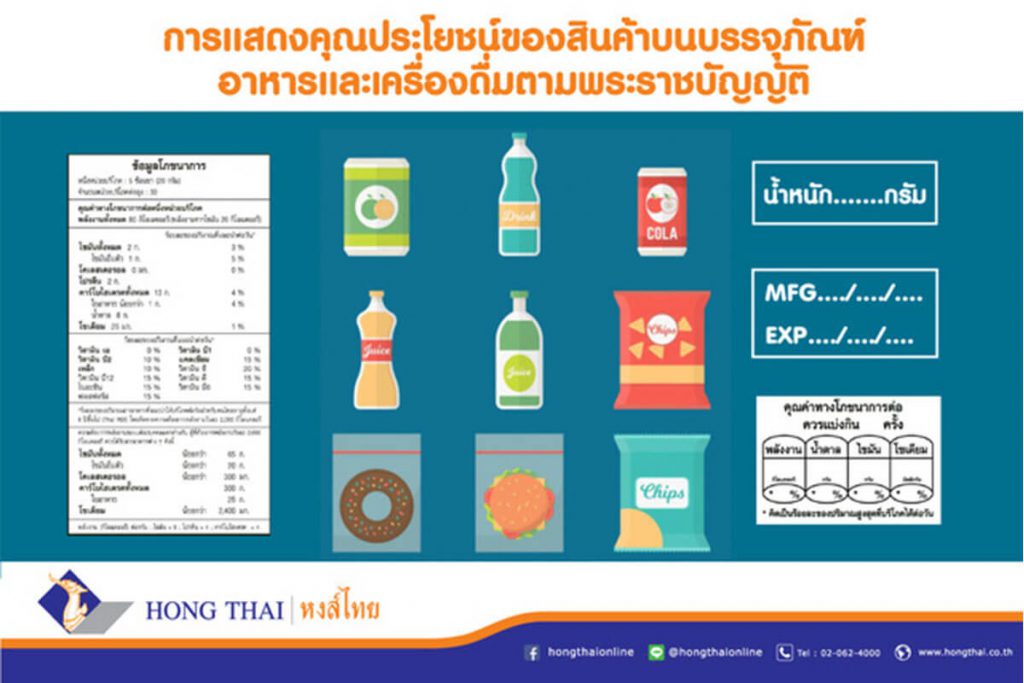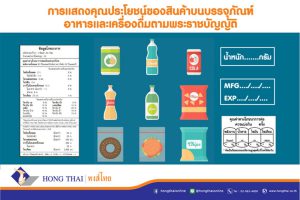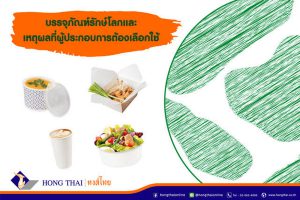Displaying product benefits on packaging has been found in research to contribute to sales by approximately 66%. However, it remains essential to include detailed information on packaging, as required by the Food Act, which mandates that all food and beverage packaging must clearly present product benefits and relevant details.
Displaying Product Benefits on Food and Beverage Packaging
According to the Food Act of 1979, all packaging must display information about product benefits. In addition to complying with this law, most business operators also provide details that help consumers make informed purchasing decisions.
1. Essential Information About Product Benefits Required by Law:
1. Indication of the net quantity of the product, meaning the weight or volume of food excluding packaging.
- Listing key ingredients, specifying their percentage by weight in descending order.
- Declaring any additives or substances added to the food.
- Providing the manufacturing date, expiration date, or best-before date.
5. Instructions on storage methods or recommendations for food preparation before consumption.
6. Warnings, precautions, or safety measures to prevent potential hazards (if applicable).
2. Information That Influences Consumer Purchasing Decisions
In addition to legally required product benefit details, businesses often include promotional content on food and beverage packaging to attract consumers. These details create a sense of necessity for the product, such as:
1. Indications of ongoing discounts, special offers, free gifts, or promotional deals to highlight the benefits and advantages of purchasing the product.
2. Product qualities and consumer benefits, such as being an organic food product with no chemical use throughout the production process.
3. Environmentally friendly packaging made from natural materials, biodegradable, and safe for food use, reinforcing consumer confidence in its safety.
4. Specially designed packaging that can be repurposed for other uses after the product is consumed.
5. Information about corporate social responsibility (CSR) activities, such as donating a portion of sales revenue to charitable organizations. This lets customers know that purchasing the product contributes to social welfare.
Utilizing food and beverage packaging as a tool to boost sales and enhance customer satisfaction is a cost-effective marketing strategy. It helps influence consumer purchasing decisions without significantly increasing production costs or product pricing.






